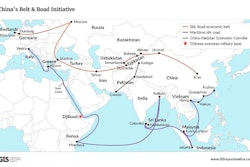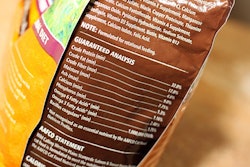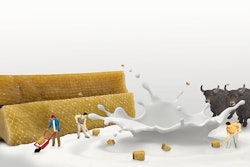
Scientists surveyed more than 2,000 dog owners in Europe about their attitudes towards pet treats, along with their usage and purchasing habits. While most pet owners said they looked at the dog treat labels to learn nutrition and health information, they also took non-nutritional factors into account.
“Owners are paying closer attention to their pet’s wellness, and the health benefits whenever claimed on treats labels are increasingly taken into account,” said Giada Morelli, DVM, PhD, small animal clinical nutrition researcher the University of Padova, Italy.
Improving dog treat labeling appeal to owners
Morelli offered advice to the pet food industry on maximizing dog treat labeling’s appeal to consumers.
“Since most respondents reported that the most important information they seek regards the ingredients and the producer’s country of origin, these could be enhanced to better appeal to the customers,” said Morelli. “For example, the ingredients list could provide specific sources instead of their categories, and being clear about the country in which the product was manufactured but also where the raw materials originated, would be much appreciated by pet owners.”
Morelli noted that laws and regulatory agencies already determine what nutrition information must appear on pet treat labels. Her suggested pet treat labeling ideas could serve as voluntary improvements to appeal to pet owners and help them better understand how treats fit into dog, cat and other pet nutrition.
However, in the United States, adding specific sources to the ingredient list is not allowed.
"I understand the Dr. Morelli is from Italy, and what she is proposing may be legal in the EU," Sue Hays, American Association of Feed Control Officials executive director, said in an email. "However, in the U.S., the ingredient list cannot contain this information on specific sources and the country in which the product was manufactured.
"Furthermore, the information on the specific sources and the country in which the product was manufactured can be anywhere else on the label except the ingredient list. An example of a company doing this is Champion Pet Food."
Details of survey on pet owners’ use of treats
Eighty-three percent of participants reported using treats regularly, mainly to reward their dog’s behavior and during training or sports. Dog owners reported usually buying several types of treats. Biscuits and dental care sticks were the most common. Dog owners gave their pets one to five every day.
Along with health and nutrition information, dog owners also responded that they look for non-nutritional factors, such as flavor (n = 321, 18%), brand (n = 72, 4%) or shape (n = 46, 3%).
Seventy-five percent of the owners (n = 1369) stated that they follow producers’ feeding instructions provided on the label.
However, not all pet owners got as much information as they could from dog treat labels.
“The survey revealed that not all owners read the labels of the treats they purchase because of the inability to interpret them,” said Morelli.
"Many respondents appeared to be attracted by non-nutritional properties of treats such as appearance, flavors and 'fun' emphasized in the labels of the products," she said.
The Journal of Applied Animal Welfare Science published the study, “A Survey of Dog Owners’ Attitudes toward Treats.”

















